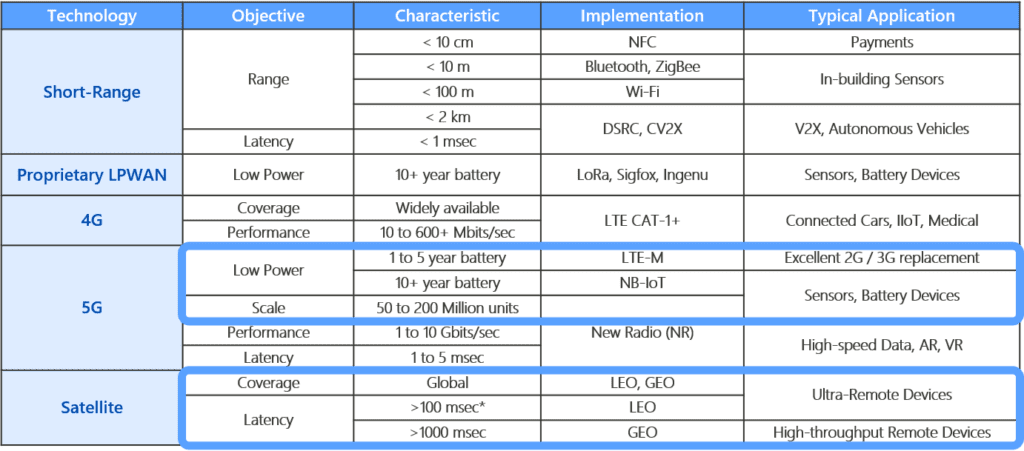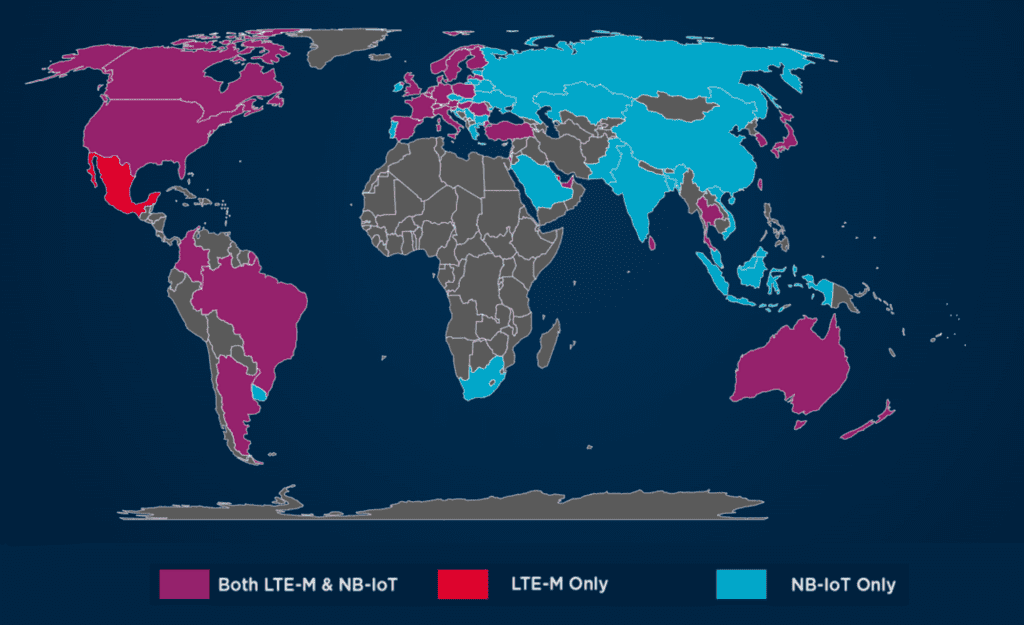
Aeris: For those who are unfamiliar with LPWA, can you explain what it is?
Z: LPWA or LPWAN (where N stands for network) is a set of cellular technologies that are optimized for the specific needs of Internet of Things (IoT) or machine-to-machine (M2M) devices. It’s different from the 2G/3G/4G cellular technologies that underpin smartphones and other mobile devices for the consumer market. This term first emerged in 2013 and gained further prominence in 2015 when the GSM Association (GSMA) defined a series of LPWA standards to help address the specific cost, coverage, and power consumption needs of growing IoT applications. From then on, LPWA has become a preferred choice for many IoT applications.
Aeris: What makes LPWA so appealing for IoT applications?
Z: Historically speaking, IoT devices only represent a small piece of the network traffic on cellular networks, since a cellular network is designed primarily for the consumer market. In the early days, cellular technology was not well suited for many IoT applications because of the high costs (for devices and services), high power consumption (which means low battery life for the IoT devices), or lack of coverage (especially in remote areas). This is why alternatives such as Personal Area Network (PAN) technologies (e.g., Bluetooth) and Wireless Local Area Network (WLAN) technologies (e.g., Wi-Fi) are quite popular for IoT devices, including consumer IoT applications.
However, PAN/WLAN technologies lack mobility and do not provide ubiquitous coverage, which is a key requirement for many IoT applications. They create tiny islands of disjointed service, and the quality and reliability of the data transmissions to remote servers and applications depend on the internet service provider’s (ISP) ability to “backhaul,” or send data on to those remote servers. Furthermore, many IoT applications require only low data rates and small amounts of data. This is where LPWA can be especially appealing.
Aeris: What are the key characteristics of LPWA?
Z: First, I want to acknowledge that no one technology can serve every IoT application, and there are definitely situations where PAN/WLAN technologies are still a clear choice. Having said that, LPWA has the following appealing characteristics:
• Number of connected IoT devices is expected to grow dramatically in the long run
• Low-cost for large deployment volume
• Long battery life
• Low data rate
• High latency tolerance
• Wide coverage (similar to 4G)
• High mobility
Aeris: Can you give specific examples or applications where LPWA is or can be used?
Z: LPWA is best suited for the following six verticals:
• Agriculture (non-precision)
• Healthcare (non-mission-critical)
• Oil and gas pipelines (leak and flow monitoring)
• Railway transport systems (asset tracking)
• Smart cities (parking, lighting, traffic monitoring, waste management)
• Smart metering and smart grid (utilities)
As with every IoT project I’ve personally worked on and/or consulted, my advice to anyone is that you have to do your homework and consider the full product life cycle requirements, as well as the customer experience and data security.
Aeris: Can you please explain the difference between the proprietary and standard LPWA technologies.

* = device to satellite. True latency depends on number of satellites in constellation. Source: Aeris
Z: The proprietary LPWA technologies are provided by Sigfox, Ingenu, and the LoRa Alliance. They operate in unlicensed spectrum and can be used either for private networks – with LoRa in particular – or public networks. With some exceptions, proprietary LPWA are used in private networks rather than the public network. This is primarily because it is more expensive to achieve full coverage with these proprietary technologies that require backhaul.
In contrast, Long Term Evolution for Machines (LTE-M) and Narrow Band – Internet of Things (NB-IoT) are the standards-based cellular LPWA technologies. Both are collectively referred to as “mobile IoT” by GSMA and they are gaining the most attention and adoption by the IoT manufacturers because of the endorsement from GSMA and wide coverage and service availability. The backhaul for IoT data using these technologies rides over the same transports as the cellular services provided for consumer mobile devices.
Key characteristics for each of these LPWA technologies include:
Sigfox
• Simple protocol that supports speed up to 0.1 kbits/sec
• Limited coverage and only in some countries
• Company is in receivership proceeding
Ingenu
• Good noise immunity for range/throughput
• Secure data transmissions (AES 128 bit)
• Proprietary technology used mainly in private networks
LoRa
• LoRaWAN® open standard supported by multiple entities
• Data encrypted for secure transmissions
• Radio costs not coming down as fast as expected
LTE-M
• Higher bandwidth for fixed and mobile IoT applications
• Lower latency for near-real-time or mission-critical applications
• Shorter battery life than NB-IoT
NB-IoT
• Low data rates and long battery life
• Higher latency than LTE-M
• Does not support voice
Aeris: To conclude, what are the most important takeaways you want people to remember about LPWA?
Z: First, that the state of IoT has changed significantly over the past decade. With the massive IoT adoption numbers forecasted by many analysts for years to come, LPWA cellular technologies have gained a seat at the table with other mainstays like PAN and WLAN technologies. For device manufacturers, it’s a question of when, not if, to deploy cellular LPWA technology for IoT connectivity.
Second, the key benefits of standards-based LPWA, such as low power consumption, low cost, and wide global coverage, have made them a compelling choice for many IoT device manufacturers. The added benefit of stronger security makes it even more appealing. This last part is critical given heightened cybersecurity concerns. There is a useful Aeris ebook that addresses this topic in more detail. I also did a webinar last year about cybersecurity for IoT devices.
Finally, I expect cellular LPWA technologies such as LTE-M and NB-IoT to gain greater adoption in the years ahead. Unlike proprietary LPWA, there is much better coverage and service availability with either one. Between the two, LTE-M provides an easy migration path for customers looking to replace aging 2G and 3G cellular devices. Because the number of carriers supporting LTE-M is higher than NB-IoT, coupled with the fact that additional efforts are required to design and deploy with NB-IoT than with LTE-M, I anticipate that LTE-M will be a far more favorable option. Manufacturers of IoT devices will leverage the ease and speed by which LTE-M can enable them to quickly bring their cellular IoT solutions to the market.

Source: GSMA


